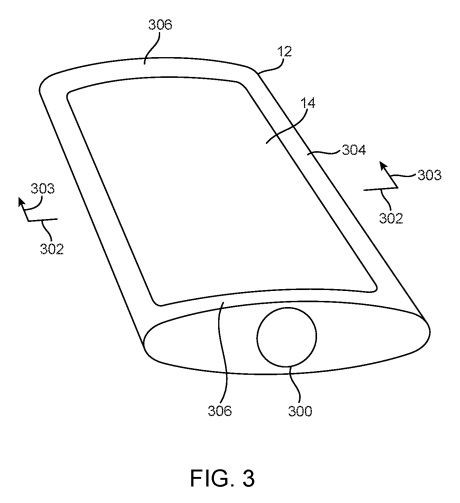iPhone Revamp: Could This Be Apple’s Big Plan For Next Smartphone?
KEY POINTS
- A new patent shows Apple is looking into a new form factor for a device
- The form uses a convex display
- This will allow Apple to put more components in the device, the inventors said
Apple is looking into the possibility of creating a new device with a convex display. Could this device be a future iPhone?
A new patent published by the U.S. Patent and Trademark Office shows Apple engineers are looking into creating a device with a convex glass display. The patent, “Electronic devices with convex displays,” describes the use of flexible screens placed over a rigid body that will let it bend to a convex shape.
The patent describes a device with a front and rear face, both of which are convex in shape. A flexible display will wrap from the front face to the rear face, leaving a small amount of space without a display. The display has a first portion that has less curvature than the second portion and acts as the front face display. The second portion has increased curvature.
For those who can't imagine how that looks like, it's actually pretty easy. The invention, based on the patent descriptions and illustrations, might look like a fifth-generation iPad Nano but with a larger display that runs from the front to parts of the back. It is curved in front and at the back and will likely feel good when held in hand.
See patent illustration and iPod Nano image below:


The patent inventors noted that the main reason for the invention is so they can create a device that will have more space to house important components.
The inventors argue that while today's electronic devices have some sort of convex shape, the display used in them are flat, limiting the number of components that can be placed inside them – not to mention affecting the device's overall appearance in a bad way.
The patent stated that by using a flexible display that will conform to the shape of a rigid structure, the display can bend, allowing the device to have more space for internal components. Such a device structure will allow for larger batteries, for example, or more parts needed for more features.
The resulting device will also look more “aesthetically pleasing to a user” compared to a convex-shaped device with a flat display, the inventors noted.
© Copyright IBTimes 2024. All rights reserved.





















